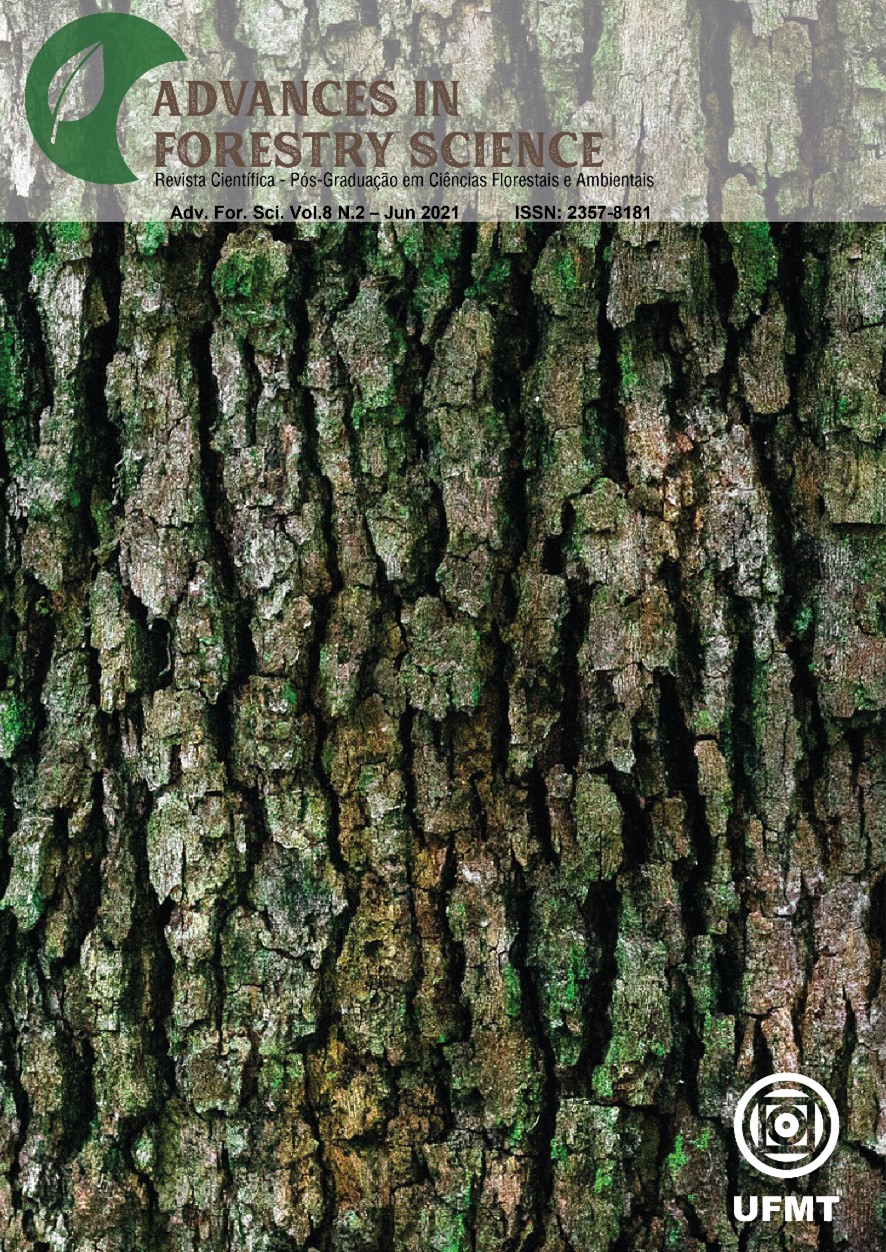Determination of the biomass stock in a mixed plantation of Pinus taeda L. and Pinus elliottii Engelm.
DOI:
https://doi.org/10.34062/afs.v8i2.10129Abstract
Mixed planting when well managed can be more efficient in the production of biomass and in the use of available resources, thus increasing the profits of planting. The objectives of this research were to quantify the biomass of a mixed plantation of Pinus taeda and Pinus elliottii, by the direct method and to verify the allocation of biomass between the components and the production of biomass per unit area of the mixed plantation and of the two species studied. From the forest census carried out in the mixed planting of 43.5 ha, at 16 years of age, the diametric distribution of the population was generated. Based on the diametric classes, 60 trees were randomly sampled by the direct method, 30 trees for each species. Then, the aerial biomass production in the different components of the tree for both species was evaluated and compared. Mixed planting produced 171.5 t ha-1 of biomass; the shaft represented more than 60% of the biomass. The biomass production in Pinus taeda was superior to Pinus elliottii. The biomass of branches, in turn, was significantly different between species. The stratified tree technique revealed that biomass production in the stand was lower than the biomass obtained by the direct method. In this technique, the biomass (t ha-1) was superior to Pinus elliottii, due to the frequency of individuals in the forest census being higher in the central diameter class, and the species having a larger number of individuals in the stand.Downloads
Download data is not yet available.
Downloads
Published
2021-09-01
Issue
Section
Original Article
License
All copyright must be assigned to the Federal University of Mato Grosso.

